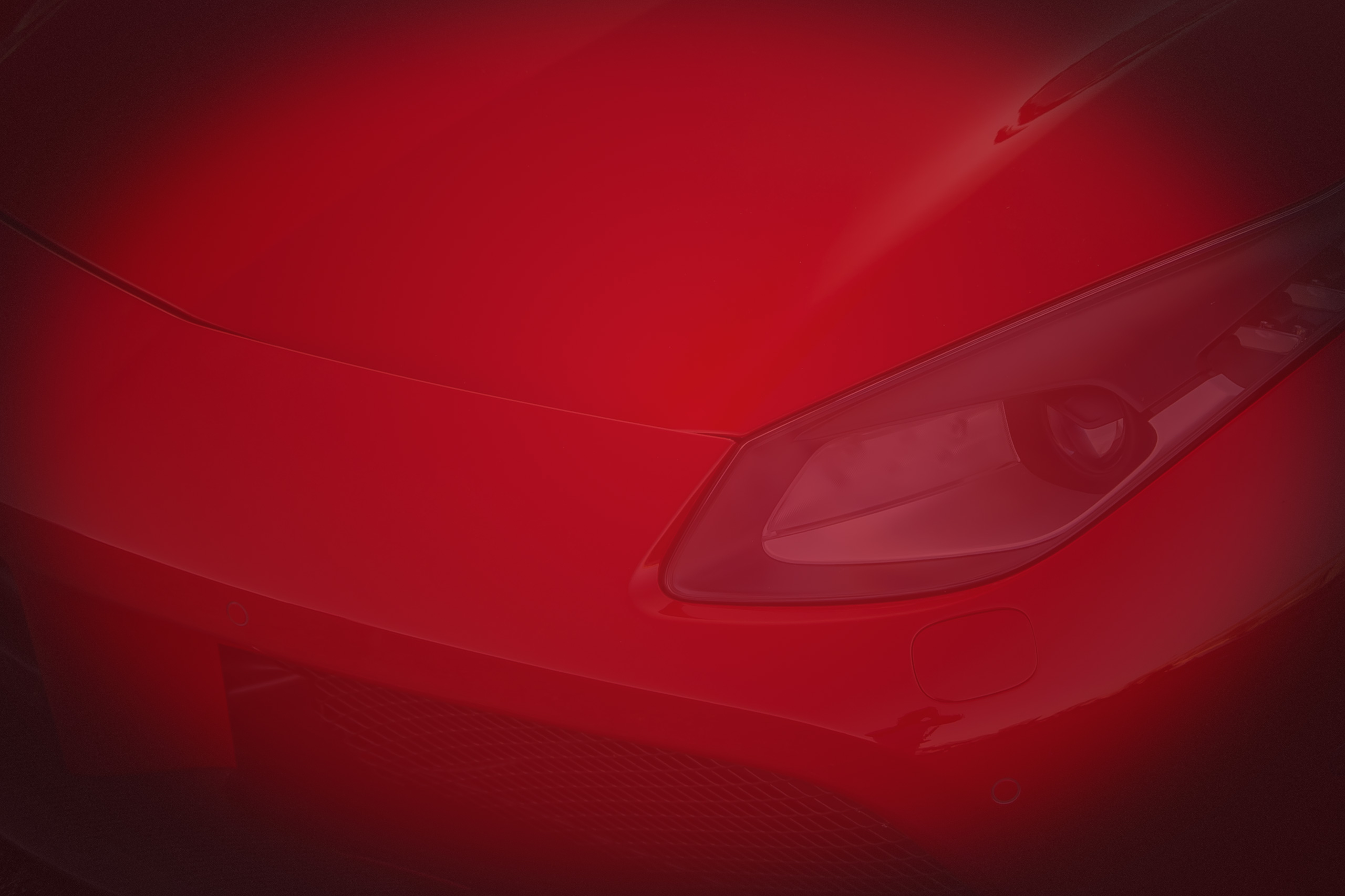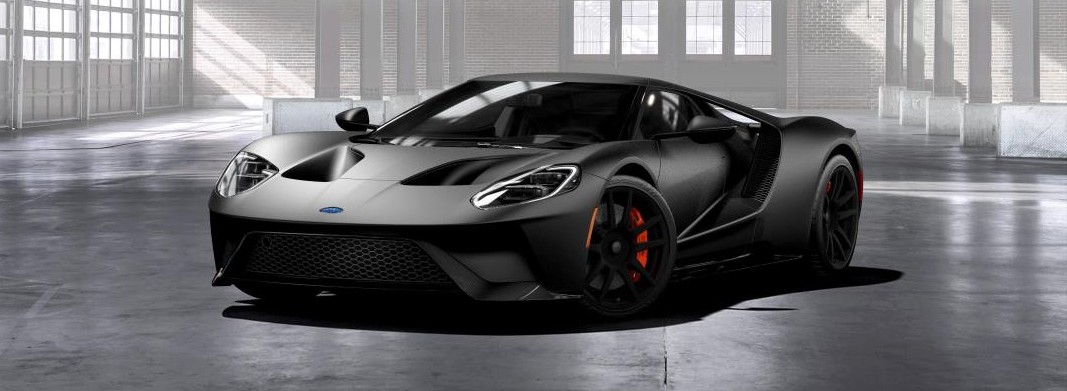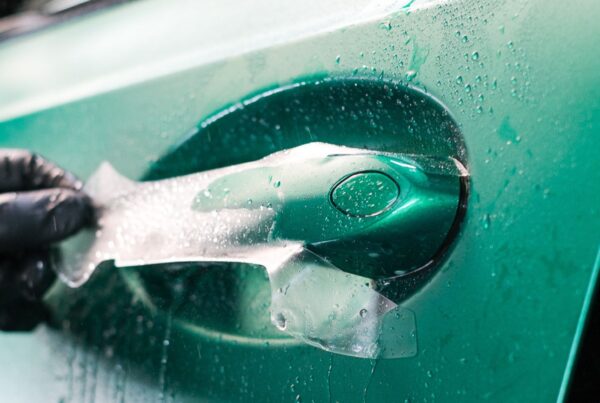So, you’re looking to determine what is the best paint protection film for cars, but not sure where to start? If that’s the case, we’re here to help. The recent decade has seen a rapid growth of proactive thinking car owners seeking a quality solution for protecting the car paint – without spending an arm and a leg. The solution most are drawn to is PPF or paint protection film.
A paint protection film like Ceramic Pro’s Kavaca provides the ultimate layer of protection against UV exposure, rock chips, road grime, bird droppings, and even acid rain. It’s a highly-durable polymer material that is flexible, transparent, and can be customized to produce an enhanced gloss or matte finish on any paint color.
So, what makes Kavaca the best paint protection for cars? Is there a noticeable competitive advantage that this instant healing PPF offers vs competitors? And is there a way to improve the protective qualities of this paint film? The answer is yes to all these questions. Let’s take some time to provide an in-depth breakdown of what makes Kavaca a fantastic paint protection film.
Does Paint Protection Film Damage Paint?
The question most new PPF shoppers ask is whether this material will damage the paint surface. The answer is a short one – no, it won’t. However, the quality of the adhesive and the techniques used by professional auto salons who install paint protection film will make it easier to remove when you determine that is needed.
Some vinyl wraps or clear bra installations are prone to letting water seep underneath the material, which can agitate the adhesive and make it difficult for removal. These are the rare instances where paint damage is possible – but highly unlikely.
For clarity and peace of mind, always set up a free consultation with a professional auto salon to ask them about their protection film, and any risks involved.
What Makes a Good Paint Protection Film?
When it comes to preventing minor scratches and keeping the car paint fresh and factory-clean, nothing on the planet compares to paint protection film. For those who need a refresher, PPF or paint protection film is a thermoplastic urethane material.
It’s typically sold to car owners as a transparent film, but it can be textured to produce enhanced gloss or matte finishes. It’s even possible to take your current gloss paint job and transform it into a visually stunning matte paint job.
The quality of protective paint film is mainly based on two important criterial:
The Raw Materials
When it comes to protection film for cars, the main criteria that determines the quality or longevity are the raw materials used in manufacturing – and the assembly of these products. There are four “levels” or layers that makes up a PPF.
- Polyester Release Liner: The base layer is a polyester release liner. While it’s not very thick, the durability of this material is what helps secure the PPF to the car paint.
- Acrylic Adhesive: To bond to the paint job, plastic or glass, the protective film requires a water-activated acrylic adhesive. The nature of the adhesive backing is a closely guarded secrete for manufacturers of PPF, but it’s safe to say that it’s not an example of being ‘stickier’ always being better. In fact, a well-balanced acrylic blend will ensure that the PPF does not damage the paint surface.
- Polyurethane: The meat and potatoes of protective films is the polyurethane blend. It’s typically up to 6.0 mils or 0.152mm in thickness, allows the PPF to stretch, and produces the super stone chip blocking attributes.
- Clearcoats: To enhance the surface protective qualities, block UV rays, and keep the PPF from being saturated with water or other liquids, a strong clear coat is added. The blend of the clear coating again impacts the overall quality of the product. Having a top coat of Ceramic Pro 9H on top of your PPF makes it even stronger at protecting your vehicle.
The Manufacturing Process
Using great materials is just one part of the development process. How they are assembled to form an elastic and super strong protection film is just as crucial. Kavaca is made in a production facility that undergoes stringent quality control testing on a consistent basis.
The machines used are precision engineered, for consistency, and the people operating those machines are frequently trained and educated on new procedures.
When choosing a protection film, always make sure you’re purchasing factory-direct products, not those that are generic films sold under multiple brand names. A little research on paint protection films will help you determine which ones are legit – and others that are not so much.
So, why is knowing this information important? Well, it’s not necessarily for being more technically savvy, but when a PPF manufacturer is transparent about their products construction, it does improve credibility. It also gives you peace of mind as a car owner to feel you’re investing in an honest and genuine paint protection film.
The main reason why car owners select a clear paint protection film is to block the potential of minor scratches – and protect their factory finish. By purchasing a high-quality PPF, you’re ensuring this objective is met.
Which PPF is Right for You?
The next question that should come up in PPF purchase conversations is which one is best for your needs. Contrary to popular belief, not all protection films are identical. While some products like 3M Scotchgard or Xpel paint protection are good car paint protection film suppliers, there are newer and advanced materials like Ceramic Pro’s Kavaca that are better at enhancing your car’s paint. Some are made for specific design or protection services including:
Paint Protection Film for Gloss Paint Finish
Some of the higher-quality PPF’s like Kavaca are protect and enhance. This is accomplished by developing a design process that customizes the visual appeal of the urethane film. For a gloss paint job, the PPF needs to be extremely transparent – with a topcoat that improves the depth of the paint’s appearance.
Most of the time, a paint protection film installer near you will recommend a detailed paint correction or polishing prior to applying a gloss film. This ensures that any swirl marks, light scratches, or imperfections on the paint job are removed. As such, the overall aesthetics of the car will be beautiful as you’d expect.
Paint Protection Film for Matte Finish
Did you know that there is no such thing as matte paint? It’s one of the biggest misunderstood automotive terms. A matte finish is accomplished by using a special clear coat that creates tiny divots or bumps in the painted surface. This technique blocks the “shine” from coming off the clear, producing that deep, rich, and wicked-cool matte finish.
Here is the main problem with matte – it’s quite easy to damage and nearly impossible to repair. As such, installing a paint protection film with a matte finish simply makes good financial sense. Not only will this specially designed PPF enhance the matte finish, but it’ll protect that expensive factory paint, increasing your cars value. Plus, it will protect your ride from road debris.
Kavaca PPF is available in both gloss and matte finish. In fact, you can use the matte finish Kavaca on a gloss paint job to transform your ride into one with a matte appearance. It can be used for any color paint and provides years of protection.
When it’s installed, Kavaca will be custom cut for each section of your vehicle, tucked behind the hood, fender, and door edge for a precision fit.
What Are the Advantages of a Car Protective Film?
If you break down your options for automotive paint protection, it really breaks down to two options: PPF or ceramic coating. A ceramic coating like Ceramic Pro 9H is great for protecting your vehicle’s paint, windows, headlights, wheels, chrome, carbon fiber, fiberglass, and more. Plus, it can be applied to a professional grade PPF like Kavaca – forming the Ultimate Shield of Protection.
If you’re going to opt for paint protection film by itself, there are several advantages or benefits it’ll produce.
- Highly resistant to contaminants and acid corrosion. This includes the toxins released by animal waste, such as bird droppings, bug splatter, tree sap and pollen.
- Offers superior protection against mineral deposits, and water spots from hoses or rain.
- Reduces the potential of UV exposure, which blocks oxidation, corrosion, and the formation of rust.
- Blocks road debris, tree branches, small rocks, asphalt, gravel, and other objects from striking the vehicle’s paint.
- Has the ability to self-heal. We’ll get to that in a few paragraphs in more detail.
- Will hold up for at least 10 years.
Anytime you’re looking for a superior protection film, those six bullet points should be verified with any PPF auto salon before you make the decision to buy. Obviously, an investment in a protection film will keep the factory paint job clean, unharmed, and help increase your resale value. When the installation is verified with Carfax, that adds more value.
What’s the Difference Between Self-Healing and Instant Healing PPF?
So, we briefly touched on this above, but it’s important to clarify the difference. Most PPF’s can repair from minor scratches – even some heavy object strikes. When it’s damaged, you’ll visit the installation center – where the technicians will use a heat source (usually a hot air gun or industrial hair dryer) to ‘melt it back to shape’.
However, a new PPF called Kavaca is infused with nanotechnology that instantly heals in a matter of seconds. This means that when the surface is scratched, you don’t need to drive to the service facility for repairs. It saves you time and improves the quality of your vehicle’s finish.
What’s the Process for Buying and Installing the PPF?
Hopefully, the information above will arm you with the right basic information and tips for choosing the best protection film for cars. The best way to begin the process is to find a certified Kavaca installation center near you.
We’ve made this easy – by partnering with thousands of experienced detailers and automotive paint protection film installers across North and South America.
To find a PPF installation center, and to begin the process, simply click the button below for a free estimate and consultation.







